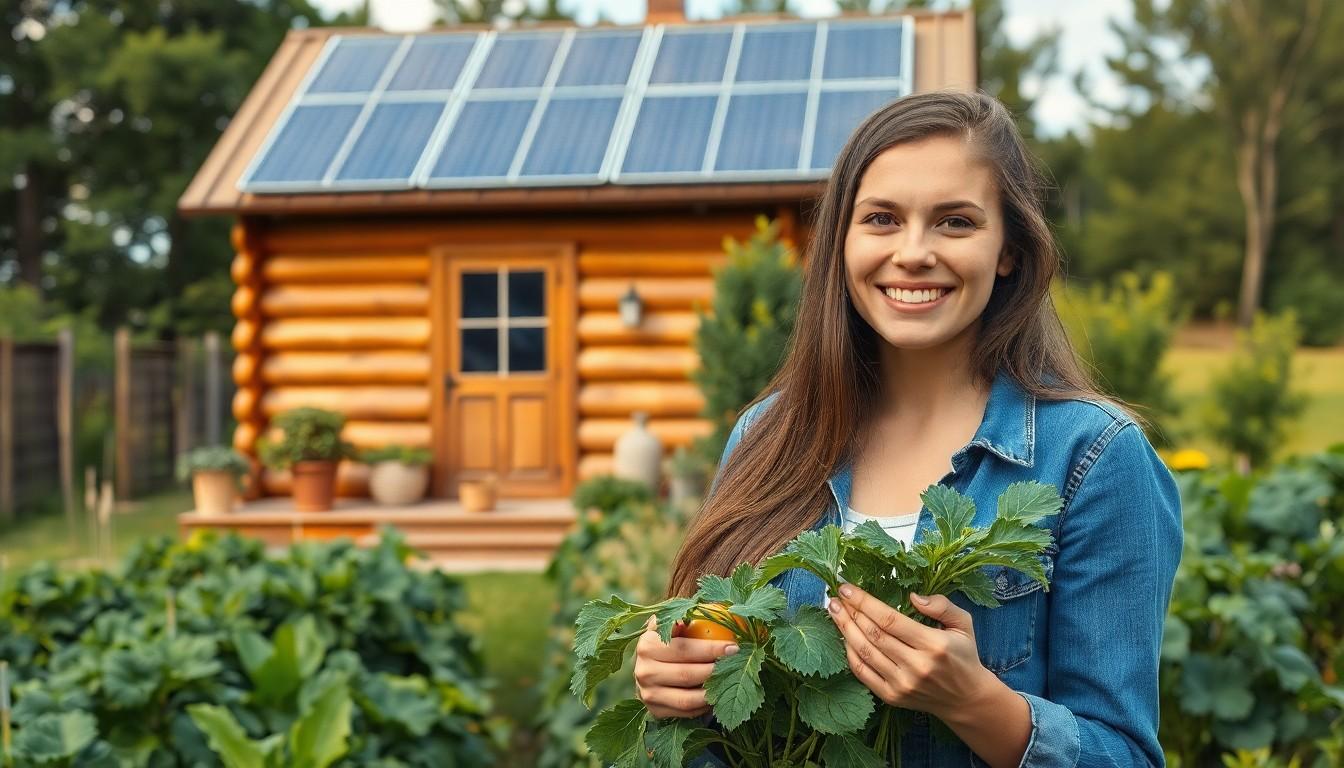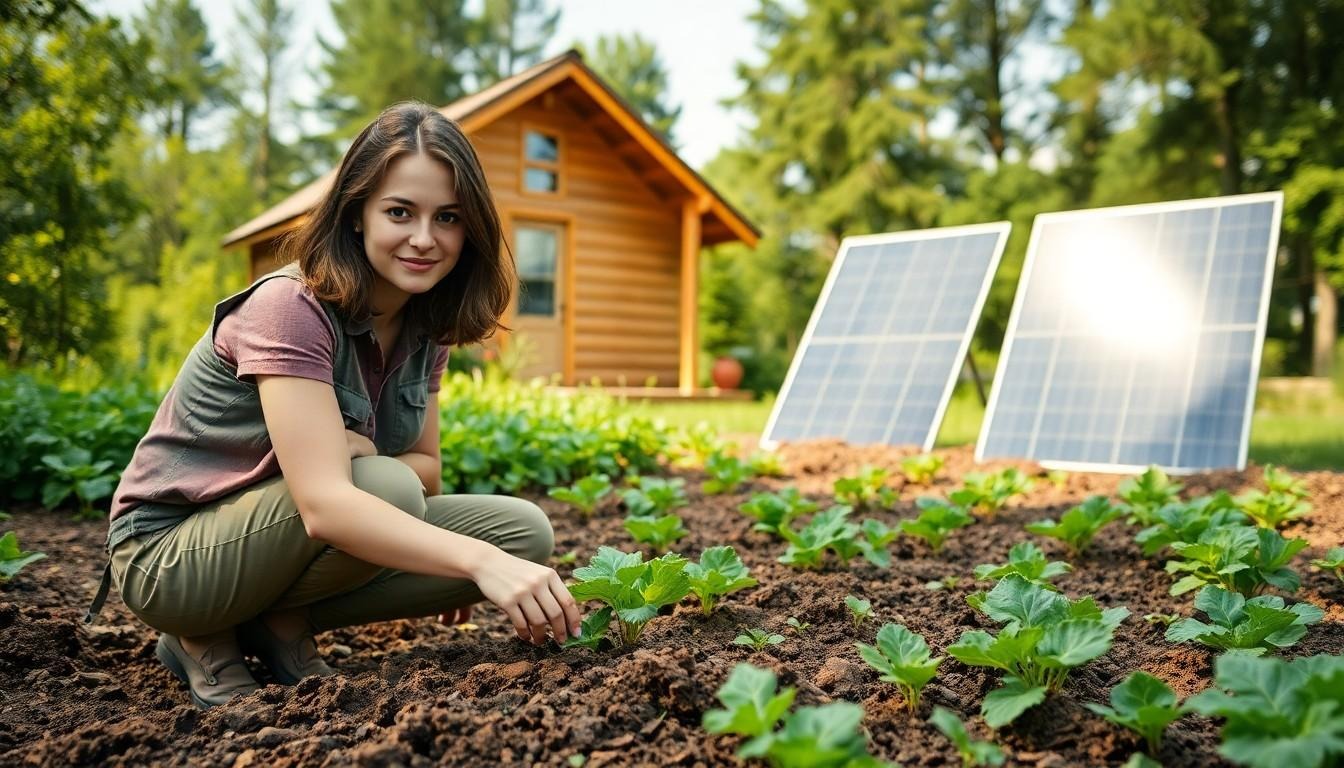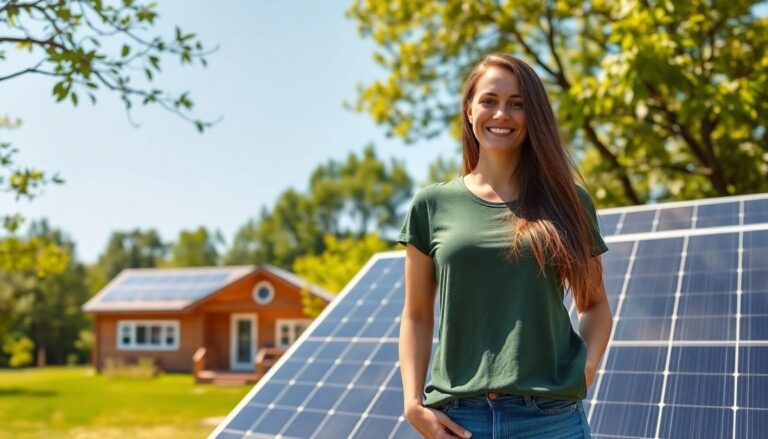Imagine sipping your morning coffee while surrounded by nature, free from the clutches of modern distractions. Off-grid living offers that blissful escape, turning the dream of self-sufficiency into a reality. For beginners, it might sound like a daunting leap into the wilderness, but fear not! With a sprinkle of planning and a dash of humor, anyone can trade in their daily commute for a cozy cabin in the woods.
Venturing into the off-grid lifestyle doesn’t mean you have to become a hermit or grow a beard longer than your Wi-Fi password. It’s about embracing a simpler way of life, where solar panels replace power bills and gardens yield fresh produce. Whether you’re ready to ditch the rat race or just curious about the idea, this guide will help navigate the exciting journey of off-grid living with a smile.
Off Grid Living for Beginners
Off-grid living refers to a lifestyle that operates independently from public utilities. This approach emphasizes self-sufficiency and a connection to nature. Individuals engaging in off-grid living often rely on alternative energy sources, such as solar or wind power, to meet their energy needs.
Developing an off-grid lifestyle involves careful planning for water, food, and shelter. Rainwater harvesting and natural filtration systems often supply water, while gardening becomes a primary source of food. Growing fruits and vegetables reduces dependency on store-bought items, promoting sustainability.
Renewable resources play a crucial role in off-grid living. Solar panels convert sunlight into electricity, enabling residents to power essential appliances without relying on the grid. Wind turbines can also provide energy in areas with adequate wind patterns, adding another layer of independence.
Minimalism frequently accompanies off-grid living. Individuals often simplify their lives by reducing consumption and focusing on necessities. Embracing a minimalist mindset aids in reducing clutter and lowering environmental impact.
Community and collaboration also emerge as significant aspects of off-grid living. Neighbors share resources and skills, fostering a supportive network. Many off-grid residents exchange knowledge about sustainable practices, enhancing the overall experience.
Off-grid living encompasses a self-sufficient lifestyle that prioritizes renewable resources and minimalism while promoting community engagement. This lifestyle grows in popularity as more individuals seek a simplified way of life.
Benefits of Off Grid Living

Off-grid living offers numerous advantages, particularly in financial independence and a sustainable lifestyle.
Financial Independence
Individuals pursuing off-grid living often experience reduced living expenses. Eliminating reliance on public utilities minimizes monthly bills, leading to significant savings over time. Solar panels and wind turbines, for example, provide energy without recurring fees, making energy independence achievable. Growing one’s own food can lower grocery costs. Many people find satisfaction in self-sufficiency, as it cultivates a sense of security against fluctuating prices. Furthermore, off-grid homesteaders frequently regain control over their finances, allowing them to invest in more meaningful pursuits.
Sustainable Lifestyle
Commitment to sustainability defines off-grid living. Relying on renewable resources, individuals contribute to environmental preservation. For instance, rainwater harvesting systems collect water, reducing reliance on municipal supplies. Organic gardening practices promote biodiversity and help individuals grow nutrient-rich food. Many off-gridders participate in permaculture, fostering ecosystems that benefit both the land and its inhabitants. Additionally, utilizing alternative energy sources decreases carbon footprints, supporting a healthier planet. A focus on minimalism encourages simpler living, making it easier to appreciate and care for the environment. Through these practices, off-grid living emphasizes a lifestyle aligned with ecological principles.
Getting Started with Off Grid Living
Transitioning to off-grid living involves careful consideration of personal needs and the ideal environment. Beginners should prioritize essential areas such as water access, energy sources, and food production.
Assessing Your Needs
Identifying specific requirements forms the foundation of off-grid living. Evaluate energy needs by determining daily usage, factoring in appliances and tools. Consider water needs for drinking, cooking, and gardening; rainwater harvesting offers a sustainable solution. Assessing personal skills and knowledge also helps shape preparation efforts. Recognizing how much space is necessary for gardening or livestock can influence the decision-making process. Individuals can set realistic goals and activities that support their transition into a self-sufficient lifestyle.
Choosing the Right Location
Selecting an appropriate location significantly impacts off-grid living success. Research areas with favorable climate conditions for gardening. Access to natural resources such as water sources is essential. Investigate local regulations regarding off-grid setups; these laws can vary significantly. Survey the terrain for potential natural hazards, ensuring safety is a priority. Connectivity to like-minded communities can enhance the experience, providing support and resources. Choosing the right location facilitates a smoother transition into this rewarding lifestyle.
Essential Skills for Off Grid Living
Essential skills play a significant role in ensuring a successful transition to off-grid living. Beginners should focus on gardening and food production, along with water collection and purification techniques.
Gardening and Food Production
Gardening skills are vital for off-grid living. Growing vegetables and fruits provides fresh, organic food and reduces grocery expenses. Beginners should start small by cultivating easy-to-grow crops like tomatoes and lettuce. These choices yield quick results and build confidence. Practicing crop rotation enhances soil health, ensuring a sustainable harvest. Learning about companion planting can further maximize yield and deter pests naturally. Preserving food through canning or drying extends the harvest, allowing individuals to thrive all year round.
Water Collection and Purification
Access to clean water is crucial for survival. Implementing rainwater collection systems offers an efficient solution. Utilization of barrels positioned strategically around the property captures rainfall for household use. Purification methods, such as filtration and boiling, ensure safe drinking water. Beginners should consider installing a simple filtration system to remove contaminants. Testing water quality periodically protects health and safety. Understanding how to collect and purify water builds essential off-grid skills, maintaining self-sufficiency and promoting overall well-being.
Off Grid Energy Solutions
Energy is a critical component for those pursuing off-grid living. Exploring renewable energy options ensures self-sufficiency and environmental responsibility.
Solar Power Systems
Solar power systems provide a reliable energy source through photovoltaic panels. These systems convert sunlight into electricity, powering homes, appliances, and tools. Beginners can install solar panels on rooftops or ground mounts, depending on space. Lithium batteries store excess energy for nighttime use, enhancing reliability. Systems require a proper inverter to convert DC electricity to AC, making it usable for standard appliances. Many find that starting with a small setup, around 100 to 300 watts, suffices for initial energy needs. Investing in quality equipment pays off with efficient performance and longevity.
Wind Power Options
Wind power options offer another avenue for renewable energy generation. Small wind turbines generate electricity by harnessing wind energy, ideal for areas with consistent winds. Height of the turbine is key; placing it 30 feet above nearby structures maximizes efficiency. Varying sizes of turbines exist, with models providing anywhere from 400 watts to several kilowatts of power. Maintenance involves regular inspections and occasional component replacements to ensure smooth operation. Combining wind and solar systems often creates a robust energy solution, providing consistent power even during low-sunlight days. Investing in both options can lead to greater energy independence in off-grid living.




